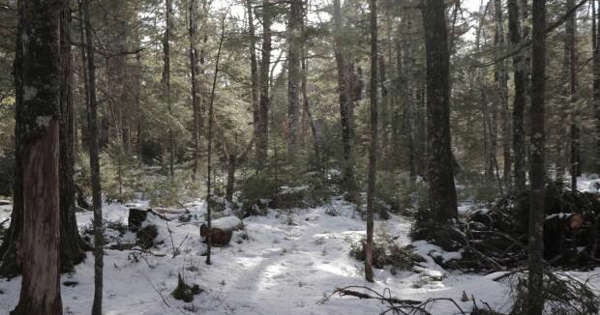[ad_1]
Donna Crossland is worried that not enough is changing in the woods.
The forest ecologist and long-time advocate for sustainable forestry said in a recent interview that she is alarmed by the large volume of proposed timber harvesting on Crown in eastern Nova Scotia.
Using the provincial government’s map viewer for potential harvests, Crossland totalled up about 1,500 hectares of proposed cuts in the last five months that she says are “functionally clearcuts.” Another 850 hectares are proposed as salvage cuts in areas with blowdowns created by Hurricane Fiona.
“This is not ecological forestry,” Crossland said in an interview.
“This is not what was the outcome from the independent forest review by Bill Lahey. This is not OK.”
Lahey, the president of the University of King’s College, authored a review of forestry practices in the province in 2018 that called for a drastic reduction in clearcuts and management of the woods that prioritizes ecological practices.
© Phlis McGregor/CBC
Donna Crossland, seen in this file photo from 2022, is vice-president of Nature Nova Scotia.
In her capacity as vice-president of Nature Nova Scotia, Crossland recently penned a letter to Natural Resources Minister Tory Rushton calling on him to halt the proposed cuts in eastern Nova Scotia from going ahead until each parcel can be reviewed through an ecological lens.
“We need to stop and really examine these cuts more closely,” she said. “Lahey said put ecological considerations first and foremost.”
Lahey’s report called for Crown land to be divided into a so-called triad, where the largest portion, about 55 per cent, is reserved for light-touch forestry. Thirty-five per cent would be reserved for conservation and protection and is off limits to all forestry activity, while 10 per cent is reserved for high-intensity forestry.
Crossland is worried that too much emphasis is being placed on high-intensity forestry at the expense of the other legs of the triad. A proposed cut of 340 hectares near Lake Ainslie in Cape Breton is particularly troubling for Crossland because she said the Natural Resources Department has mischaracterized the nature of the land.
© CBC
Natural Resources Minister Tory Rushton says he has faith in the public comment period to raise concerns related to proposed forestry harvests.
Areas need to be properly assessed, in person, by biologists before any cuts are approved, she said. The department too often relies on information that doesn’t accurately reflect what’s happening on the ground, said Crossland.
That’s meant that species at risk can be overlooked. Such was the case in the Annapolis Valley where citizen scientists found the presence of rare lichen at the site of a proposed cut, resulting in changes to the harvest plan.
For his part, Rushton said that example proves the system works.
While he acknowledges his department does not have the resources for someone to inspect every piece of land in real time, Rushton said he has faith in the system and that feedback received during the public comment period on proposed cuts is reviewed and taken seriously.
Harvests not guaranteed
That’s what happened near Bridgewater last year when a proposal to log was indefinitely delayed because it was shown to be in an area that included the endangered Atlantic whitefish.
“We may find out through the investigation from our department that this is not a site that needs to be cut,” Rushton said in an interview.
“Just because the application comes in does not mean that it’s going to get a harvest.”
The minister and Crossland are of different minds when it comes to the need for salvage cuts in areas affected by Hurricane Fiona.
Dealing with blowdown
While Rushton said the wood needs to be removed while it is still of value and to prevent potential forest fires, Crossland said such concerns are overstated because of rapid decay in Nova Scotia’s humid climate. The removal of so much wood from Crown land also serves to depress values of wood on private lands, said Crossland.
Leaving some of that blowdown in the woods creates an opportunity to teach ecological forestry practices and it can also nourish depleted soil, and create hummocks and hollow terrain which helps with water retention and diversification of the forest floor topography, she said.
Rushton said he knows people are concerned that the recommendations of the Lahey report are taking longer to implement than hoped, but he said he thinks his government has made good progress since being elected in 2021. Ruston said he remains committed to finishing the work by 2025, as called for in his mandate letter.
[ad_2]


